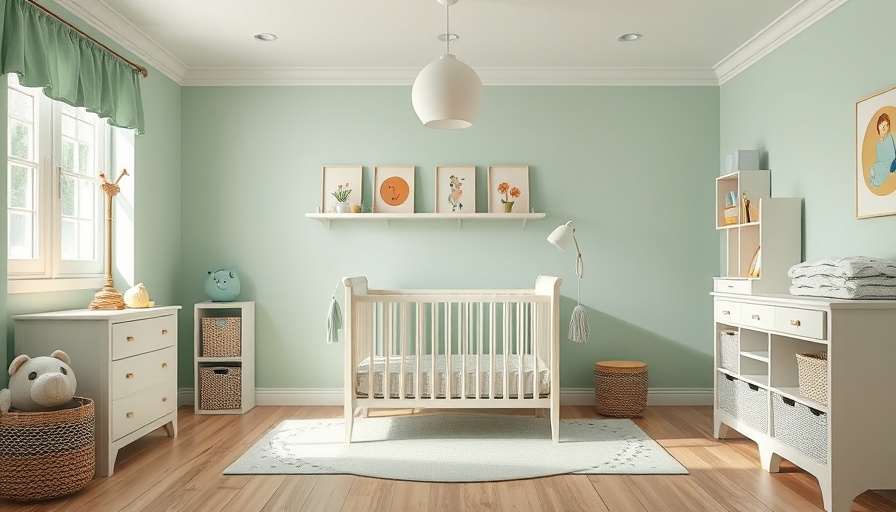
Transform Your Nursery: Smart Tips for Small Spaces
Babies might be little, but their belongings can quickly take over your home. If you're a parent living in cozy spaces, whether it’s a snug Portland home, a compact Brooklyn apartment, or a rental in Austin, organizing your nursery can feel overwhelming. However, by implementing smart nursery organization ideas, you can create a functional and clutter-free space that thrives despite spatial constraints.
1. Choose Multifunctional Baby Gear
When it comes to maximizing limited space, multifunctional baby gear is your best ally. Rachel Neill, a Wisconsin-based CEO and mother of six, emphasizes that in small homes, every item must earn its keep. Products like play couches that can transform into play mats, obstacle courses, or makeshift kitchens are ideal. Neill suggests, “Look for items that evolve with your child—these not only save floor space but also help simplify your life.”
Moreover, opting for multi-purpose furniture can also benefit parents—especially over time as their children grow and their needs change. A prime example is Expand Furniture’s Murphy Bed Bookcase, a smart addition for any nursery that combines a bed, table, and storage into one sleek solution.
2. Harness Vertical and Hidden Storage
In tight quarters, utilizing vertical space can drastically change the organization game. Professional organizer Jaclyn King from South Norwalk suggests creative solutions like under-crib storage bins for bedding and sleep sacks or ledge shelves to keep books off the floor. This approach not only keeps the nursery tidy but also creates an illusion of space by drawing the eyes upward.
Don't forget to exploit the backs of doors! Mounting baskets or caddies there provides a unique storage space for essential items without sacrificing valuable nursery real estate. This innovative thinking can help you keep everything accessible yet neatly tucked away.
3. Configure Mobile Baby Stations
For the parents navigating small living spaces, mobile baby stations can be a game changer. By creating designated areas throughout your home equipped with diapers, wipes, and toys, you can easily move gear from room to room. This not only reduces clutter in your main nursery setup but also improves efficiency, allowing you to attend to your baby’s needs effortlessly.
4. Utilize Baskets and Bins
A practical and attractive solution to nursery organization is the simple basket or bin. They can hold just about anything—from toys to changing supplies—while maintaining a clean appearance. These organizers are incredibly versatile and can fit on shelves, under beds, or even as decorative pieces around the room. Choose baskets that match your nursery’s color scheme to enhance visual appeal.
5. Establish Baby Zones to Minimize Chaos
Creating defined zones within the nursery or adjoining spaces can significantly reduce chaos. Designate specific areas for changing, feeding, and playing, and keep the necessary items close at hand. This strategy not only organizes the space but also helps create a structured routine, which is beneficial for both parents and babies.
6. Rotate Toys to Control Clutter
Lastly, a simple yet effective method to minimize clutter is to rotate toys regularly. By limiting the number of toys available, you can maintain your sanity and ensure that your little one appreciates their belongings, rather than becoming overwhelmed. Introduce new toys gradually, keeping the nursery fresh and engaging while reducing the need for constant cleaning.
Final Thoughts on Nursery Organization
Implementing these innovative nursery organization ideas can transform your small space into a tranquil haven for both you and your baby. The key takeaway? Every piece you bring into your home should serve multiple purposes and help maintain a peaceful environment.
As family dynamics and needs evolve, remain adaptable. With careful planning and clever organization techniques, even the tiniest nursery can feel spacious and functional.
 Add Row
Add Row  Add
Add 



Write A Comment